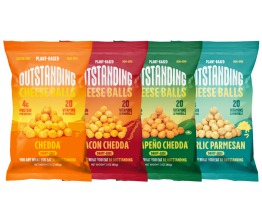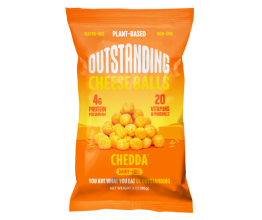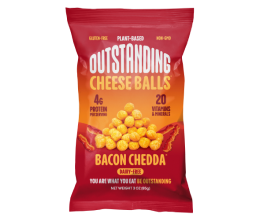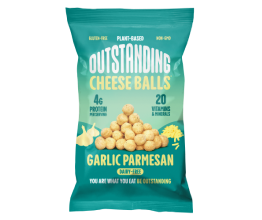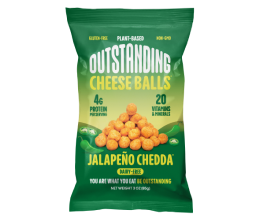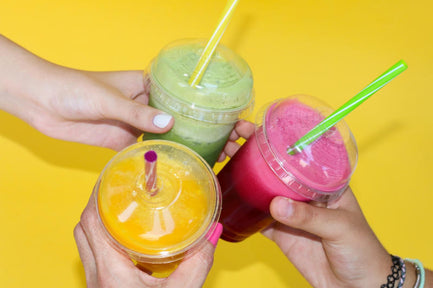Is Yeast Gluten Free? Everything You Need to Know
When you commit to gluten-free living, it tends to involve a lot more research than you expected. You end up scanning labels, asking questions, and reading articles like this one to figure out what foods are off-limits for your new diet. It’s not all gluten-free brownie mix and butterflies.
That’s because there are so many unexpected sources of gluten in our food, and many items you thought were safe turn out to have that hidden gluten within. Going gluten-free is like playing a game of The Floor Is Lava, except the lava is the gluten, and the floor is almost every single food item you pick up.
Yeast is one of those food items that raises a lot of questions for the gluten-free crowd and in general. What is yeast exactly, does it contain gluten, and what else do you need to know about it?
Let’s get down to business and answer all that and more, so keep reading to get the complete lowdown on yeast and whether it’s really gluten-free.
What is Yeast?
Yeast has been around for a long time. No, like, a loooooooong time. And people have been using it for a huge amount of history. It’s been a subject of interest and extensive research for thousands of years, so why don’t we give you the short version and get right into gluten-free facts.
Yeast is a single-celled microorganism and a member of the fungus kingdom. There are at least 1500 species of yeast currently recognized, although they only make up about 1% of all the fungus in the world.
While yeasts are unicellular, they evolved from multicellular ancestors, meaning they have some interesting traits that other single-celled organisms lack. They reproduce fast, have a wide range of metabolic variability, and of course, many uses in the kitchen and beyond.
Yeasts have been known to generate electricity, produce ethanol (read: alcohol), cure infections, cause infections, and do many other mysterious things that science is still seeking to understand. They're also used in most recipes that require bubbles, like beers, wines, and bread loaves (AKA the process of fermentation into carbon dioxide and alcohol). If that sounds like an insane number of things, you’re right; it is!
We’re here to talk about the gluten-free diet, however, so let’s zoom in on what types of yeast you can eat or drink if you want to live the gluten-free life.
Brewer’s Yeast
If you enjoy a drink now and then, you’ve got to be wondering what types of alcoholic beverages you can have on a gluten-free diet.
Brewer’s yeast is a common type of sugar beet-based yeast used to produce beers, wines, and different types of spirits, but it’s rare to find gluten-free products that contain this ingredient.
Unless it’s specified on the product label with a clear gluten-free indication, you won’t be able to sip these drinks or use brewer’s yeast as a supplement. Always go case-by-case to be safe. We’re sorry to say this, but you might need to stop shotgunning that beer.
Baker’s Yeast
This type of yeast is used to make bread, so most gluten-free eaters should see that as a red flag. However, some gluten-free bread products also contain yeast, which means you can safely consume those without worry. In fact, baker's yeast reacts well with gluten-free all-purpose flour and other gluten-free flours like rice flour for baking gluten-free bread recipes and pastries.
It’s not so much the yeast you have to worry about when sticking to a gluten-free diet. Most yeasts do not contain gluten, and you can always double-check that they're labeled gluten-free to be sure. The real culprits are the other ingredients that go into products containing yeast, such as bread, pastries, and other items that are definite no-gos on the gluten-free list.
Whether you go for fresh yeast or active dry yeast, it’s always important to look at those labels, especially when looking at the dry varieties. Some manufacturers throw in some wheat flour or starch in their dry yeast products before popping them in the oven, taking them off the menu for all our gluten-free guys and gals.
Thankfully, our culture is increasingly conscious about dietary restrictions and will be accommodating when you ask questions at restaurants, bakeries, or wherever you’re buying food. You just have to ask the right questions before you buy those amazing-looking yeast breads or croissants.
Yeast Extract
This product is a clear, water-soluble form of yeast that results from the autolyzation of the enzymes in the yeast itself. The result is a product that is super versatile, with countless applications in the kitchen.
Yeast extract and autolyzed yeast extract may be gluten-free, but this does not mean that a product containing yeast extract will be free of gluten, as many contain barley. Since manufacturers don't need to list the source of yeast extract on their labels, look for yeast extract that is specifically labeled gluten-free.
Here’s what you need to know: nobody just eats straight-up yeast (unless you do, in which case, weird. But good for you?). The real issue is finding products that contain yeast and still check off all the boxes for your diet and lifestyle.
Gluten-Free Foods with Yeast
Okay, so if you’re still vibing with yeast after all that, there are a few ways to work it into a gluten-free diet without derailing your efforts to avoid things like wheat, grains, and starch.
Dairy Products
Many dairy products contain small amounts of yeast and achieve distinctive flavors, textures, and health properties as a result.
Yogurt is a great example of a unique product containing a mixture of both live bacteria and yeast, both of which can be controlled by the body’s immune system to prevent any issues.
In fact, these are considered the “good types” of bacteria and yeast that help fortify the body and provide it with a high-protein, low-carb snack as well. To really max out those health benefits, look for authentic Greek yogurt products with low sugar.
The same goes for cottage cheese, which is often mentioned in the same category as yogurt. Yeast is an important part of getting that interesting clumpy texture in cottage cheese, which is definitely something you either love or hate.
Meats and Fish
Yeast is often included in packaged meat and fish products, although we can’t recommend these products fully because they generally aren’t organic and often contain GMO ingredients.
If you do choose to eat meat or fish, it’s best to steer clear of the processed stuff and stick with all-natural cuts from a butcher you trust. Yeah, we’re throwing it back to the days when people just, like… had butchers.
A Savory Flavor for All
We couldn’t make it through this article without giving a much-deserved shoutout to nutritional yeast, a product that is finally getting the attention it deserves. You go, Glen Coco (or nutritional yeast, whichever works).
This is a dried gluten-free yeast product that can add a rich, almost cheesy flavor to whatever dish you want. Nutritional yeast is sugar-free, salt-free, dairy-free, and it’s certified gluten-free, as long as you buy from a reputable brand with the certification.
The versatility of nutritional yeast is amazing, and the second you sprinkle your first flakes, you’ll be adding it to snacks, doughs, and recipes all over the place.
Some of the most popular applications of “nooch” include popcorn, eggs, pizza, pasta, and proteins. If you’re a vegan or vegetarian cook – or even a meat lover – you’ll want to add a shaker of nutritional yeast to your pantry ASAP.
Benefits and Uses of Yeast Extract
When it comes to a reliable and effective ingredient for gluten-free folks (as well as vegetarians and vegans), we are big fans of yeast extract at Outstanding Foods.
Yeast extract is simple, powerful, and a little bit packs a big punch. Plus, it has some health benefits worth noting in addition to the deep flavor it adds to our snacks and seasonings.
Here is a closer look at why we love yeast extract, and why it plays a key role in so many of our recipes.
Flavor Enhancer
Yeast extract has a very distinctive flavor, and it’s hard to describe unless you’ve tried it for yourself. Think of a tangy, slightly salty taste that is heavy in “umami” and other savory flavors. No, not unagi—that’s the type of sushi that Ross keeps talking about in Friends.
If you’ve ever tried a product like Marmite or Vegemite – popular spreads in Australia and Europe – you’ll know that it’s quite a pungent flavor and will either make you jump for joy or spit it out in a second.
However, yeast extract doesn’t always need to be so overpowering, and in many cases, it can be used to add a more subtle taste to dishes like soups, sauces, dips, and salty snacks.
Source of Nutrition
Yeast extract isn’t known as a heavy hitter in terms of nutrition, mainly because you don’t need to add much to your dish to get the desired effects of flavor.
However, just a teaspoon of yeast extract contains more than 1.5g of protein in fewer than ten calories, with a negligible amount of carbs and no sugar.
Vitamins and minerals are the real highlights in nutritional yeast, and you can expect to get sizable amounts of magnesium, calcium, niacin, folate, and B vitamins in a single serving.
It’s not going to make or break your diet, but in a world where we need all the extra nutrients we can get, it definitely doesn’t hurt.
Super Snacks
Want to see what yeast extract can do for flavor but not ready to wield its power in the kitchen for yourself? We can help you with that, since our flagship snacks and seasonings contain yeast extract and add unbelievable taste to each bag.
Try our Outstanding Puffs to get rich and savory flavors like Pizza Partay, Hella Hot, and White Chedda. Yes, pls.
Our ever-popular PigOut Pigless Pork Rinds also use a pinch of yeast extract to bring you fantastic flavors like Texas BBQ and Nacho Cheese. It’s all gluten-free and all good. Don’t miss out!
Conclusion
Yeast isn’t the easiest ingredient to understand, and its gluten-free status really depends on the situation. Do your research and stick with certified gluten-free products to stay in the clear (especially if you have Celiac Disease) and enjoy the flavor.
Sources:
